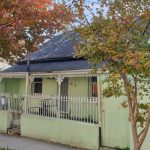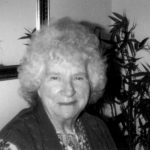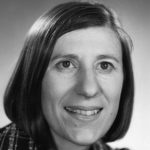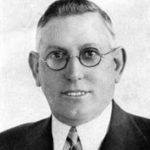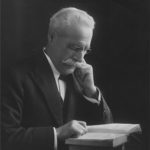Who Lived on Your Street?
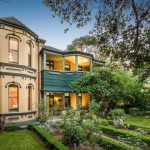
Who lived in your street? Annie Sophine Kerr
Annie Sophine Kerr, born Carlson, lived at 270 Glebe Point Road for 20 years before it became the infamous boys’ home, Royleston. Known locally today as Trickett’s after a recent owner, the house was numbered 204 and 234 before the address was fixed in 1906.
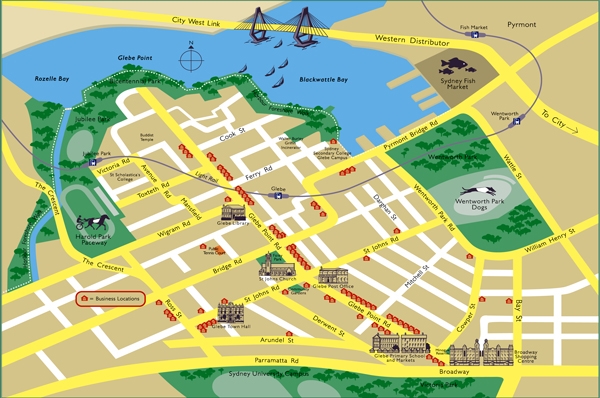
Durham Court 417 Glebe Point Road
By Lyn Collingwood, from Bulletin 2/2008 (March-April) In last month’s Planning Matters, Neil Macindoe reported on a development application for Durham Court. Lyn Collingwood has been doing some research. Durham Court at 417 Glebe Point Road is currently the subject of a DA before the City of Sydney. The property consists of a house dating […]

Gone and Forgotten on Glebe Point Road – Part 1
Rodney Hammett commences a multi-part saga about Glebe Point Road at the corner of Mary Street– the history of the houses, the developers and builders and the people who lived in the houses. This complements the articles by Lyn Collingwood about ‘Who lived in your street?’
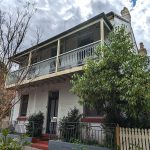
Glebe’s Blue Plaque Nominations, Part 19: Toxteth Park Hotel
The pub that’s not a pub. George Allen, a strict teetotaller, named his grand Glebe estate Toxteth Park. So his death in 1877 might have been hastened by the establishment of the Toxteth Park Hotel in 1873 in Westmoreland Street. Lyn Collingwood tells the story.
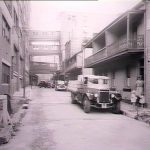
Who lived in your street? Thomas Collins (d.1854)
Spiritualist Madame Zanzi conducted seances there, and at number 8 the wife of carnival showman Arthur Gabriel advertised that she was keen to buy animal and bird ‘freaks of nature’. Lyn Collingwood dips into the fascinating history of Grose Street.

Who lived in Grose Street, Glebe?
By Lyn Collingwood, Bulletin 7/2023, September Camperdown’s Grose Street and Grose Farm Lane are named for Francis Grose who administered New South Wales for two years after Governor Arthur Phillip returned to England. The University of Sydney was built on Grose Farm, and Francis is commemorated in the Blue Mountains by a valley and a […]
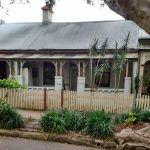
Brian Dewhurst remembered
Brian Tasman Dewhurst (1927-94), a distinguished foreign correspondent, lived at 54 Westmoreland St Glebe. He was a life member of the Sydney Journalists Club.
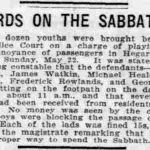
Cards on the Sabbath – a story from Hegarty St
Investigations of the 22 families living in Hegarty St (off Hereford St) in the early years of the 20th century reveal numerous fascinating stories, one was of six local youths up before the Glebe Police Court in May in 1910 for playing cards on a Sunday. The families included the King, Rowland, Watkin and Slater families.
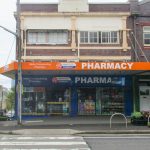
Who lived at 373 Glebe Point Road?
373 Glebe Point Road, at the corner of Forsyth Street, has been home an interesting array of people. Changing names several times, it was home to a young Douglas Mawson in the 1890s. It now houses the Glebe Point Pharmacy.

Tim’s Bottle Shop – Who Lived at 375 Glebe Point Rd?
Land cornering Forsyth St and Glebe Rd, part of 36 acres granted to Captain William Dumaresq in 1840, was auctioned as the 15-allotment Avona Estate in March 1899. James Stedman had engaged stonemasons and bricklayers to erect three villas for rental on the main road: Fairleigh and Milford, plus Holwood on the Forsyth St corner. Who lived in these houses?
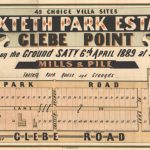
The creation of Allen St, Glebe
Advertising for the first subdivision of Toxteth Park in May 1886 shows Park Rd as the original name of what was to become Allen St. Six years later it seems it was known as Allen St, named after the Allen family who owned the Toxteth Estate and lived in what we now know as St Scholastica’s.

27 Catherine St, Forest Lodge – a brief history of ownership
A Blue Plaque is to be fixed to 27 Catherine St, Glebe, home of civil rights activist Charles Perkins in the 1960s. This article tells the story of its earlier occupants in the 19th and 20th centuries.

The Captains of Arcadia Rd
When houses were being built in Arcadia Rd, two were for families of sea captains, also known as master mariners. Captain Percy William Bull moved into No. 3 in 1895 and Captain John Bolton Carpenter into No. 47 in 1900. Percy William Bull Percy William Bull was well known as the master-in-charge of ships on […]
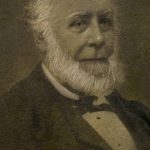
John Korff and Hereford St
One of Hereford St’s most important and colourful families in the 19th and early 20th century were the Korffs, who gave Coffs Harbour its name. John Korff, a qualified shipbuilder and naval architect arrived in Sydney in 1835 and first settled on the Hunter where he built a cutter called the Rovers Bride and another […]
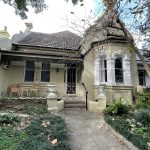
Arcadia Rd (South) – the first owners and builders
When I wrote about Arcadia Rd in Bulletin 4 of 2017, I had enough information to write about the first owners of Arcadia Rd (north). Since then, I have learnt more about the NSW Land Records system and can now report on the southern side of Arcadia Rd. The Toxteth Estate, owned by George Wigram […]
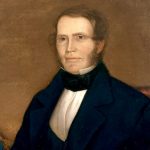
Henry Smithers Hayes (1801-81)
During the 1840s when Henry Smithers Hayes managed the Brisbane Steam Flour Mill he gave his address as ‘Blackwattle Swamp’. Before land reclamation was finally completed in 1880, the muddy headwaters of Blackwattle Bay reached about as far as today’s Parramatta Rd. In a real estate quasi-pastoral spin, some auctioneers named the area ‘Blackwattle Swamp […]

John Tawell (1784-1845)
A plaque in Foley Park lists John Tawell as one of the occupants of Hereford House which stood on the site from 1829 until its demolition in the 1930s. Tawell is recorded as having lived there during the years 1831-5. (Druggist Ambrose Foss purchased Hereford House in 1833.) An ex-convict who ‘made good’, John Tawell […]
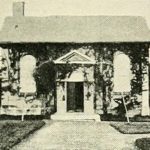
Josiah Slater (1815 – 1890)
Josiah Slater was one of George Allen’s most trusted servants on the Toxteth Park Estate. When he died on 17 April 1890 his residence was Elim. Dating from ca 1878, the two-storey freestanding building was probably built close to an earlier worker’s cottage in the Toxteth grounds. Elim is now 236 Glebe Point Rd. Its […]
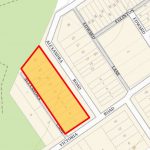
Who lived in these houses? Alexandra Rd (west side) – the first owners and occupants
Part of the final subdivision of the Toxteth Estate, the lots in Alexandra Rd were first advertised for sale in 1904. On the western side it was builder James Howard Brown who purchased six of the 11 lots so we can assume he constructed the homes we see on those lots, apart from the more […]

Rock Lane, Glebe – the story behind the name
You could be forgiven for thinking that Rock Lane was named for the rocky outcrop it traverses, however it’s in recognition of Harry Rock, Glebe Alderman in 1913 (briefly) then 1926 to 1928. The political aspects of Harry’s life in the Glebe branch of the Labor Party are covered in detail by Michael Hogan in […]
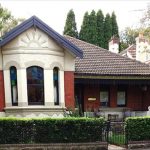
James Percy Clifford (1878-1919)
A victim of the 1919 flu pandemic, Dr James Percy Clifford was in 1903 the first tenant of 35 Allen St after moving out of St John’s College during the course of his studies at Sydney University. He shared the newly built house with his two unmarried sisters: Johanna Margaret, four years his senior, and […]

The Butcher, the Baker et al
Butcher’s and baker’s shops were generally located along the suburb’s main arteries. In 1901 each of the 16 Glebe butchers serviced an average of 1200 residents; and the 7 bakers served about 2750 people each.
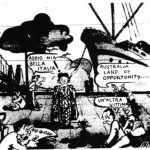
Mario Abiezzi
In 1952 Italian born Mario Abbiezzi was living in St Johns Road, Glebe. Just before Christmas he received an official letter giving him two months’ notice of deportation. As a member of a “communist penetrated organisation and a financial contributor to a communist publication’, he had been refused naturalisation.
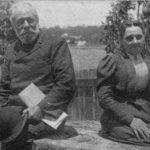
Arcadia Rd (North Side) – the First Owners and Occupants
The first sale was two lots (Nos 2A & 4) to Robert Winn, a builder, in August 1895 and the last lot (No 2) sold 13 years later in 1908.
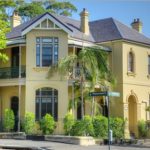
William Aysh Adams
William Aysh Adams was one of three carpenters (most of the other 210 passengers being agricultural labourers) on board the immigrant ship Julindur which landed in Sydney on 5 April 1849. Adams had moved to Sydney by 1879 when his youngest daughter married Thomas B Nosworthy at the Glebe Wesleyan Church, and by 1882 he had settled as a ‘gentleman’ of means at Ethelville an eight-roomed house at 9 St Johns Rd adjacent to a Congregational Church.
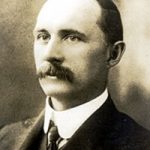
1 Allen Street
Occupied at different times by the Tilson, Clark, Monie, Cohen, Drew, Thomas, Lucas, May, Hunt and Young families, the site also played a part in Glebe’s railway history.
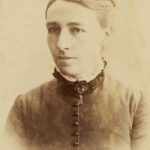
Maybanke and Francis Anderson
Maybanke Anderson, feminist and educationist, was involved in a wide range of reformist issues, especially relating to women. Francis Anderson was the first Challis professor of logic and mental philosophy at the University of Sydney.
Another articles about Maybanke and Francis Anderson is in the People in Glebe’s History section of this website.
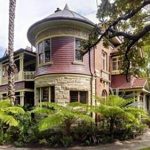
Joseph Angel and Elizabeth Levy
In 1907 “Hartford” at 244 Glebe Rd, together with its specially made and bought furniture, was purchased by the Levy family who had moved in by 1910 – Henry ‘Harry’ Phillip ‘of independent means’, his brother Joseph Angel, a wholesale jeweller, Joseph’s wife Elizabeth ‘Lizzie’, and Basil Angel, in adult life a partner in his father’s jewellery business.

Robin Askin
Robin William Askin, Premier of NSW for the then record term of 1965 to 1975, preferred to be known as Bob and changed his name by deed poll to Robert in 1971.
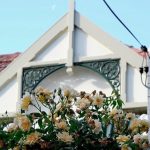
19 Avenue Road
Number 19 had one ‘famous’ owner – the Catholic politician Dan Minogue. Dan was born in Ireland in 1893 at Feakle, County Clare, Ireland. So the house was named for a birthplace.

John and Janet Bardsley
One of Glebe’s original corner stores, 55 Glebe St was run as a grocery for over a century from the 1850s. The Bardsleys were early shopkeepers there.
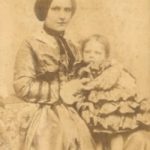
James Johnstone Barnet
Much is on the public record covering James Barnet’s career as Colonial Architect; this article focuses on his life in Glebe and Forest Lodge where he settled after arriving in Australia.
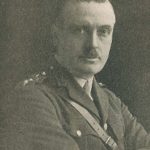
Sir Samuel Henry Egerton Barraclough
In 1892 Samuel Barraclough’s family home was Gareloch 16 Toxteth Rd. This was the year he graduated with a Bachelor of Engineering degree from the University of Sydney. He later became Dean of the faculty and a fellow of the university senate over a three-decade period.
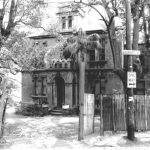
The Birtles: Dora Eileen and Herbert Victor Minns
After their marriage on 23 August 1923 newlyweds Bert and Dora Birtles were in digs at Ellangowan, 1 Stewart St. The pair became part of a network of Leftist literati including Nettie Palmer, Jean Devanny, Kylie Tennant, Christina Stead, Katharine Susannah Prichard, Frank Dalby Davidson, Flora Eldershaw, Marjorie Barnard and Miles Franklin.
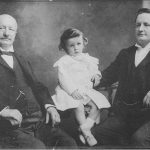
Rudolph Hermann Bohrsmann
For most of his working life Dr Bohrsmann was a medical practitioner at 36 Glebe Road adjacent to Derby Place.
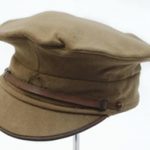
George Bowen
George Lloyd Bowen was a casualty of the First World War. At the time of his enlistment he was his widowed mother’s only child, living with her at 277 Glebe Point Rd, in Palmerston Terrace.

Henry Butters
Henry Butters was the second publican of the University Hotel, taking over the lease from John Walton in September 1858. He remained there until 1866 when he moved to the Currency Lass on the corner of Glebe Rd and Mitchell St. Butters lived in Waterloo House, Mitchell St, until his death in 1892.
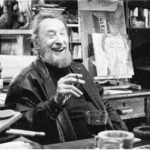
Barry Lawrence Canham
Musician, painter, sculptor and “non-violent” anarchist Barry Canham rented the same top floor flat at 28 Toxteth Road.
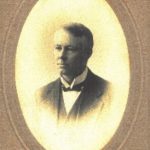
Henry & Essie Clay
Harry Clay was a theatrical entrepreneur whose family home was based for many years in Glebe. He promoted his daughter, Essie, as a “child wonder” and a “phenomenal child balladist”.

Michael Joseph Conlon
Michael Conlon set up a pottery business in Broughton Street, Glebe, on 1875. When he
began his pottery “he only employed two lads” but by 1907 the works employed 28 on an acre and a half of land.

John & Albert “Tibby” Cotter
“Tibby” Cotter is regarded a possibly the best fast bowler of the first decade of the 20th century. His pace, and habit of frequently breaking the stumps and occasionally the batsmen, earned him the nickname of “Terror” Cotter in England. He joined the AIF in 1915 and served at Gallpoli. In 1917, he was shot and killed at Beersheba.
An article about “Tibby” Cotter is in the People in Glebe’s History section of this website.

Plorn Dickens
“Plorn” Dickens, the tenth child of Charles Dickens, settled in Australia. The 1896-1900 Glebe Electoral Rolls listed his occupation as “gentleman”, which implied either inherited wealth or unemploymment. In Plorn Dickens case, it was the latter.

Darcy Ezekiel Dugan (1920 – 1991)
Career thief Darcy Dugan lived his last years in Glebe and was at least once on the run in the suburb. An armed robber but never a killer, Dugan spent over half his life in prison but was more famous for his derring-do than his crimes.
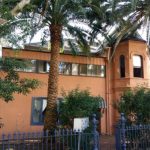
Edsburg and Glenlea
Edsburg and Glenlea were the original names of the two Victorian mansions still standing on Mary St. Glenlea now number 4 is being restored as a family home; number 6 has been converted into flats.
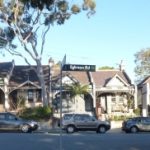
The Eglinton Road Project
The Eglinton Road precinct provided a possibly unique situation where all but one of the houses in the street were built by one builder over a period of time.
There is an entry for each house identified by address under which all currently known and released information is recorded.
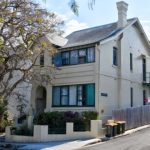
Linda Louise Farrell
Nurse Farrell ran Buxton, a private maternity hospital at 22 Wigram Rd from 1921, when it stopped functioning as a private residence, until she retired after her 60th birthday. A large number of Glebe babies were born at what was referred to as ‘Nurse Farrell’s private hospital’.

John Foulis
Physician John Foulis had a medical practice on today’s Broadway and a t two addresses in Glebe Road.
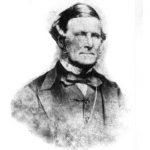
Joseph Fowles
Sydney in 1848, illustrated with copper plate engravings of the city’s main streets and buildings, was an instant success when published in parts in 1848-9. The book’sauthor lived for a number of years in Glebe.
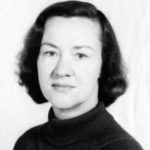
Thelma Honora Forshaw
Author and book reviewer, Thelma Forshaw, lived in and around Glebe and wrote about the area.
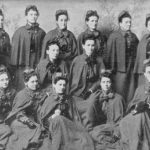
Anna Gardiner Garden
Nursing sister Anna Garden took six months’ leave to join the Second Contingent sent to the Boer War. Determined to go and willing to pay her own passage, Anna was a last-minute addition to other Army Nursing Service Reservists already selected.
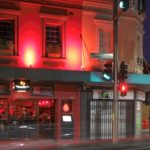
Glebe’s Saloon Keepers
The Different Drummer, 185 Glebe Point Rd, is the oldest of Glebe’s wine bars. Alcohol has been sold there since 1903.
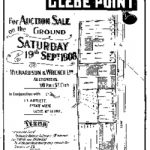
Michael Golden
Michael Golden was a landholder of substance. He owned much of Leichhardt Street at Glebe Point, Sidcup, a seven bedroom mansion with a library and dining, smoking, breakfast and ironing rooms, stable and coach house on the corner of Cook Street and Glebe Point Road (now units) and eight houses in Duncan Street (now gone) off Bathurst Street.
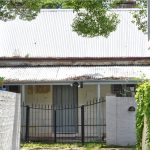
75 Hereford Street
Known locally as ‘the old farmhouse’, this building has survived for just on 150 years, making it one of the oldest in Forest Lodge/Glebe.
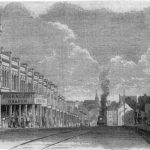
Edward Hinder
Edward James Hinder ran his “Family and Dispensing Chemist” between Cowper and Francis streets “opposite the Council Chambers” from 1876 until his untimely death at the age of 30.
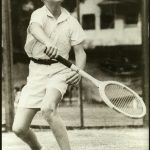
Lew Hoad
Lew Hoad was a prominent tennis player in the 1950s. For five straight years, beginning in 1952, he was ranked in the world top 10 for amateurs, reaching the World No. 1 spot in 1956. He represented Australia in the Davis Cup with Ken Rosewall, winning the Cup for Australia four times from 1952-1956. He was widely regarded as one of the most naturally talented of tennis players.
An article about Lew Hoad is in the People in Glebe’s History section of this website.
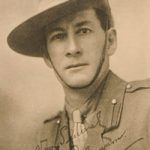
James Alexander and Jessie Hogue
‘Dismal Jimmy’ Hogue, MP for Glebe 1894-1910, was Minister for Public Instruction 1895-9 and 1907-10 and Colonial Secretary 1904-7. He married Jessie Robards, born at Raymond Terrace on 18 October 1853, a skilled rider said to be the first woman to reach the summit of Mt Kosciusko on horseback.
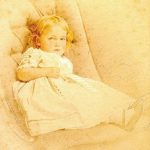
John Riley Hood (1841 – 1926)
John Hood was a pioneer photographer and the father of commercial photographer and photojournalist Sam Hood, whose collection of prints and 44,800 negatives forms an invaluable pictorial resource at the State Library of NSW.
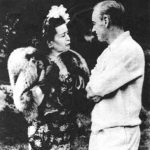
Harry Hopman
Harry Hopman was the architect of Australia’s post World War II tennis supremacy. “Hopman’s chickens” during the “Hopman era” included Frank Sedgman, Ken McGregor, Mervyn Rose, Ken Rosewall, Lew Hoad, Ashley Cooper, Neale Fraser, Rod Laver, Roy Emerson, John Newcombe, Fred Stolle and Tony Roche.

Mervyn Emrys Rosser Horton (1917-83)
Art patron Mervyn Horton was born at L’Aiglon 278 Glebe Point Rd. He was on the committees of the National Trust, the Gallery Society, the Arts Council of Australia, the Society of Artists and the Art Gallery of NSW. In 1962 he founded Art and Australia to promote Australian artists.
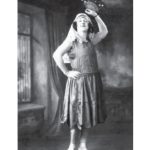
Gladys Victoria Hunter
During the 1920s and 1930s, Gladys Hunter sang and danced in a variety of theatrical performances. In the 1960s and 1970s, she ran a secondhand/antique business at 45 Glebe Point Road while living next door at number 43.
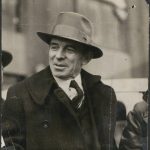
Frank Hurley
Frank Hurley, who was born in Glebe in 1885, is best known today as a photographer and filmmaker who worked in the Antarctic with Mawson and Shackleton, was official photographer during the two world wars, and made expeditions to Papua during the 1920s.
An article abut Frank Hurley is in the People in Glebe’s History section of this website.
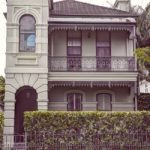
Michael Nicholas Hurley
Fictionalised in Underbelly, Hurley in 1994 had been exposed by the Wood Royal Commission as a key figure in Sydney’s underworld, and at the time of his death was about to stand trial on charges of heading one of Australia’s biggest cocaine importations.

Florence Theodora Jacobs
Florence Jacobs was the original owner of Durham Court, 417 Glebe Point Rd, built on part of the Golden Estate, subdivided in 1908. In 1909 Florence’s mother Sarah Speare bought lots 1 – 4 between Leichhardt St and Cook St. Sidcup on the Cook St corner.
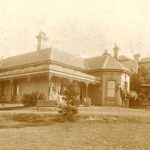
William Jarrett
The headland at the junction of Blackwattle and Rozelle bays was at one time popularly known as Jarrett’s Point after the builder of Venetia, a double-storey mansion, and Bellevue, its adjacent four-bedroom cottage. William Jarrett’s properties included four terraces comprising St Aubyn’s on Kennedy St (now Leichhardt St flats) and the Gaza-Alma stretch 433-445 Glebe Rd, plus dwellings in Brougham, Campbell and Mitchell streets, the Fairlight farm at Mulgoa and houses, shops and land at Leichhardt, Petersham, Ashfield, Marrickville, Canterbury and Campbelltown.
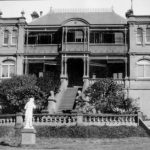
Llangollen
Built on the waterfront at Blackwattle Bay at a cost of £75 for ship chandler and sailmaker George Linley Robinson, Llangollen was occupied by November 1844.
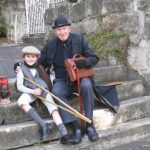
Leichhardt Avenue
This is the story of Leichhardt Ave, created after the subdivision of the Golden Estate in 1908 but not given its own name until 1923.
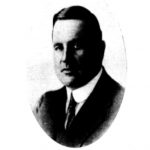
Thomas John Ley
The only person whose career is summed up in The Australian Dictionary of Biography as “politician and murderer” and in The Australian Encyclopaedia as “politician and criminal” lived for a number of years at various addresses in Glebe.

John Locke
John Locke was co-founder of the NSW Magic Soap Company which erected its corrugated iron buildings on Wentworth Park Rd in the late 1880s and by 1892 was employing 16 hands.
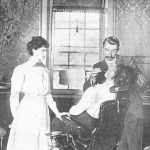
Edwin Randolph Magnus and Lilian Magnus
Hartford (244 Glebe Point Road) on the subdivided Toxteth Estate was built for dentist E Randolph Magnus (his preferred name), the driving force behind the establishment of Sydney’s Dental Hospital.

Douglas Mawson
Geologist and explorer, Mawson is best known for his exploratory expeditions to Antarctica. He joined Shackleton’s expedition from 1907-9, and headed the Australasian Antarctic Expedition of 2011 – 14. The scientific work he undertook in this and later expeditions formed the basis for Australia’s claim to 42% of Antarctica as Australian territory.
An article about Douglas Mawson is in the People in Glebe’s History section of this website.
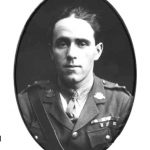
Joseph Maxwell
Joseph Maxwell was the second most highly decorated Australian soldier in the First World War.
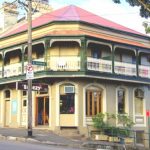
Andrew McGovisk
Andrew McGovisk built the Bridge Hotel on the corner of Pyrmont Bridge Rd and Junction St with a shop on either side.
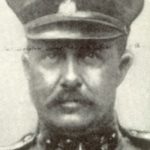
James Whiteside Fraser McManamey
Major James McManamey was born and married in Glebe and taught at the Collegiate School on Glebe Point Road. He later trained as a barrister. As Second in Command of the 19th Battalion 5th Infantry Brigade, McManamey was killed by shrapnel on 5 September 1915 just two weeks after landing at Gallipoli.
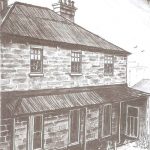
Richard Thomas and Mary Anne Meares
The Meares family were the first occupants of Cliff Lodge at the corner of Mary St and Glebe Point Rd, a two-storey sandstone villa set in extensive grounds, with a bathing house on Blackwattle Bay. Renamed The Anchorage in the 1920s, it was demolished by Parkes Developments in January 1971.

Michael David Mitchell
Michael Mitchell was a businessman with a whole grocery and wine and spirits business. He served as a JP and an Alderman and was a founding member of the Glebe Masonic Lodge.
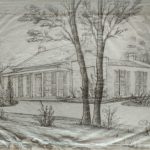
William Henry Douglas Mitchell
In September 1880 the Guildford Lodge estate on the corner of Leichhardt St and Glebe Point Rd was bought by William Mitchell. After the departure of the Mitchell family Guildford Lodge was rented out. In April 1925, Guildford Lodge was bought by Frederick Stearns & Co. Guildford Lodge was demolished and replaced by a factory. In 1944, Frederick Stearns & Co. was bought out by the Sterling Drug Co.
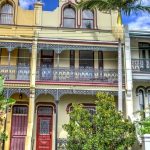
Una Irene and Edna Marjory Moncrieff
In 1975, Una Moncrieff was living at 139 Wigram Rd Forest Lodge, her family home since the time of WWI. She and her sister Edna claimed to be cousins of singer Gladys Moncrieff who in 1921 achieved fame throughout Australia as The Maid of the Mountains. Over time they assumed the surname ‘Moncrieff’ and, like ‘Our Glad’, were in show business, playing up the connection in their publicity.
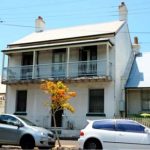
John and Mary Mullavey – 55 Westmoreland Street, Glebe
John Mullavey opened the Toxteth Park Hotel in 1873, its licence and the leasehold of the building passing in 1882 to his widow who ran the pub until her own death 15 years later.
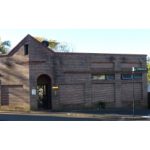
Ellen Mary Neely
In an age before regular garbage collection services, mandatory labelling of products and the disposal of items after only one use, accidental
death by poisoning was not uncommon. Fourteen-year-old Nellie Neely was one such victim.
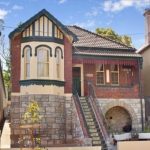
Northcote Rd – the First Owners and Occupants
Northcote Rd was part of the final subdivision of the Toxteth Estate, advertised for sale in October 1904.
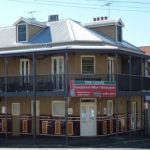
Patrick O’Sullivan
Patrick O’Sullivan was publican of the Burton Hotel in Denmam Street (now part of St Johns Road). On 31 March 1880, he died after being involved in a fight with three of the pub’s young customers.
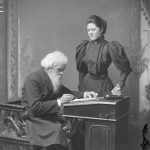
Julia Parkes
The third wife of the Father of Federation lived at two addresses in Glebe: Auburn, 15 Allen St, and Maryville, 393 Glebe Point Rd.

Arabella Zarah Parr
‘Belle’ Parr was the victim of a murder-suicide shooting. During the First World War she lived with her husband William, a postal worker, at Ayr House a slate-roofed building he jointly owned at 255 Glebe Point Road on the corner of Marlborough Street.
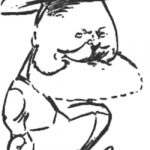
John George and Archibald Purves
John George Purves lived in Glebe for over 50 years. His name has been given to the short street near the site of his 93 St Johns Rd steam bakery. In 1885 JG became one of the few Australian bakers to mechanise bread-making, replacing the old hand-made method.
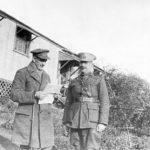
Robert Racklyeft
Rev. Robert Racklyeft served as a chaplain in France during the First World War. He was posted to Glebe in 1927 and set up the Boys Brigade. He enlisted again as a chaplain in the Second World War.

The Retreat, 53 Leichhardt Street
This house is one of Glebe’s oldest surviving stone buildings, dating from ca 1856. It was isolated, surrounded by vacant land until the early 1870s when Ambrose Thornley jnr erected Florence Villa next door. The Retreat was built for James Rothwell, a George St saddler and harness maker who won several government contracts.
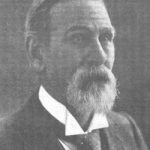
Thomas Harris and Eva Elizabeth Harris Rainford
After his touring days were over, opera singer Thomas Rainford lived in Glebe until his death. His daughter Eva also had a long association with the suburb.
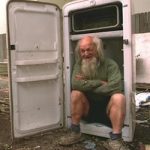
Ernest Ridding (“Ernie The Fridge Man”)
“I now spend most of my time repairing refrigerators and giving them away to anybody in need. Everybody should have a fridge. If someone brings me a fridge I usually swap it for a good one.”
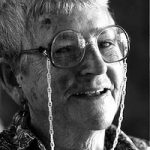
Edna Ryan
Edna Ryan (1904-1997) was a political activist and famous fighter for the rights of women.
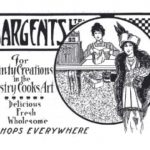
The Sargent’s Pies Family
In 1886 and 1187, George Sargent operated a bakery at 64 Glebe Street. After his introduction of the “penny pie”, business boomed. By the time of the Great War, Sargent’s Ltd owned six cafes and 36 tea rooms, including the ‘largest Tea Romm in the Commonwealth” in Pitt Street, Sydney.
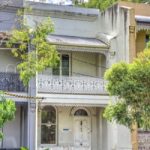
William Pell Sharpley
In 1952 self-styled ‘Wandering Poet’ William Pell was staying at 109 St Johns Rd when he penned his six-stanza ‘At Sunset on the Nullarbor’.
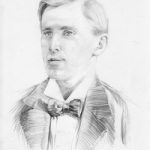
Alfred James Shearsby
Alfred James Shearsby was an historically important photographer and geologist.

Sheehy Street
The Intercolonial Investment, Land, and Building Company purchased the three acre site of the Strathmore Estate in September 1899. The new owners proposed a 25 lot subdivision. Sheehy St was created in 1900 at the time of the subdivision




